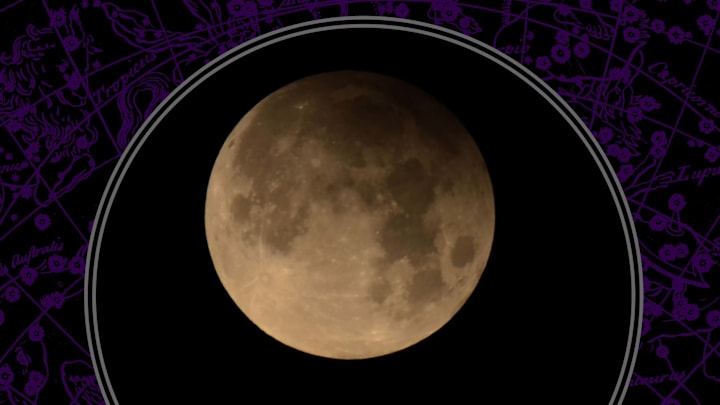Three or four millennia ago, diviners from the Shang dynasty in China observed and predicted the machinations of the heavens, inscribing their findings—along with their patrons’ prayers—on the skeletal shoulder blades of oxen or sheep. These oracle bones are some of the oldest known records of eclipses on Earth, including the often-faint penumbral lunar eclipse.

In 1604, Johannes Kepler coined the term penumbra in his book, Astronomiæ Pars Optica, or The Optical Part of Astronomy [PDF]. The word consists of the New Latin pæne (“nearly, almost”) and the Old Latin word umbra (“shade, shadow”). Kepler used it to describe a portion of shadow near the edges of a circular body that is still “partially illuminated.” A gray area. A graduated step to the much darker umbra further from the body’s edges. And the key difference between a penumbral and a total lunar eclipse.
What is a penumbral lunar eclipse?
Just like their solar counterparts, lunar eclipses are all about shadows and alignment. Instead of the relevant bodies in the order sun-moon-Earth, though, it’s sun-Earth-moon. And there’s also a difference in scale. When these celestial bodies align just right in a total solar eclipse, the moon’s shadow dances along a tiny portion of the Earth’s curved surface. But in a total lunar eclipse, the entire moon is swallowed by the Earth’s central shadow—its umbra—when the bodies are perfectly aligned.

But thanks to our eccentric, wobbly moon, with its 5-degree tilt from the normal, orbital plane (appropriately called “the ecliptic”), about a third of all lunar eclipses only ever hit the “partially illuminated” shadow of the Earth's penumbra, and are thus classified as penumbral lunar eclipses.
When to See the Penumbral Lunar Eclipse
Something to keep in mind: eclipses never occur in isolation. If you know of an upcoming lunar eclipse, check the surrounding weeks on the calendar for its solar pair.
Shortly after the rare hybrid solar eclipse coming up on Thursday, April 20, which will be seen in parts of Western Australia and Southeast Asia, the penumbral lunar eclipse will take place on the night of Friday, May 5. The gradual darkening of the moon as it slips silently into the partially-illuminated shadow of our world will be visible to people all over Africa, Asia, Australia, and Europe, just like the diviners of yore.
